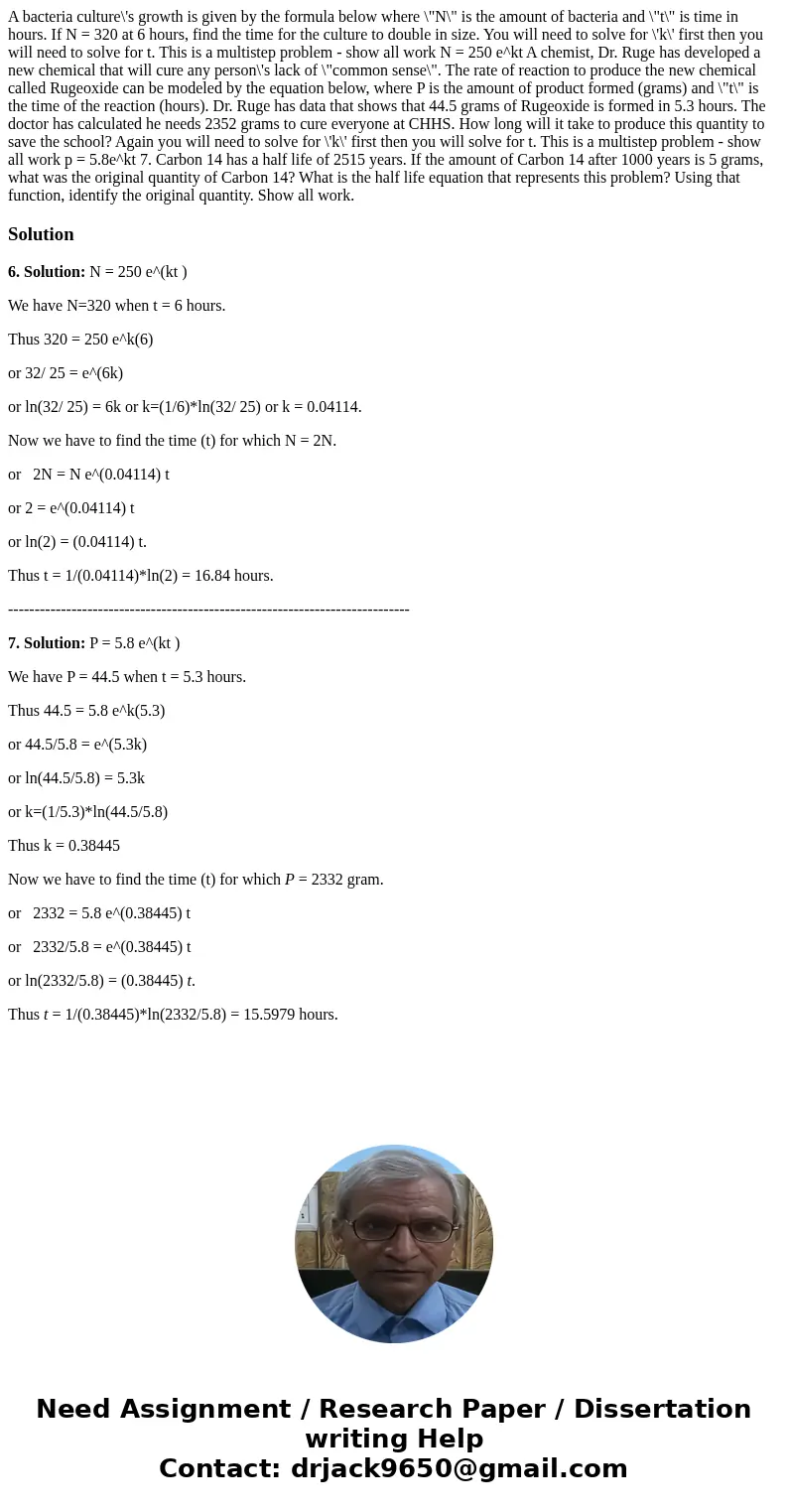A bacteria culture\'s growth is given by the formula below where \"N\" is the amount of bacteria and \"t\" is time in hours. If N = 320 at 6 hours, find the time for the culture to double in size. You will need to solve for \'k\' first then you will need to solve for t. This is a multistep problem - show all work N = 250 e^kt A chemist, Dr. Ruge has developed a new chemical that will cure any person\'s lack of \"common sense\". The rate of reaction to produce the new chemical called Rugeoxide can be modeled by the equation below, where P is the amount of product formed (grams) and \"t\" is the time of the reaction (hours). Dr. Ruge has data that shows that 44.5 grams of Rugeoxide is formed in 5.3 hours. The doctor has calculated he needs 2352 grams to cure everyone at CHHS. How long will it take to produce this quantity to save the school? Again you will need to solve for \'k\' first then you will solve for t. This is a multistep problem - show all work p = 5.8e^kt 7. Carbon 14 has a half life of 2515 years. If the amount of Carbon 14 after 1000 years is 5 grams, what was the original quantity of Carbon 14? What is the half life equation that represents this problem? Using that function, identify the original quantity. Show all work.
6. Solution: N = 250 e^(kt )
We have N=320 when t = 6 hours.
Thus 320 = 250 e^k(6)
or 32/ 25 = e^(6k)
or ln(32/ 25) = 6k or k=(1/6)*ln(32/ 25) or k = 0.04114.
Now we have to find the time (t) for which N = 2N.
or 2N = N e^(0.04114) t
or 2 = e^(0.04114) t
or ln(2) = (0.04114) t.
Thus t = 1/(0.04114)*ln(2) = 16.84 hours.
----------------------------------------------------------------------------
7. Solution: P = 5.8 e^(kt )
We have P = 44.5 when t = 5.3 hours.
Thus 44.5 = 5.8 e^k(5.3)
or 44.5/5.8 = e^(5.3k)
or ln(44.5/5.8) = 5.3k
or k=(1/5.3)*ln(44.5/5.8)
Thus k = 0.38445
Now we have to find the time (t) for which P = 2332 gram.
or 2332 = 5.8 e^(0.38445) t
or 2332/5.8 = e^(0.38445) t
or ln(2332/5.8) = (0.38445) t.
Thus t = 1/(0.38445)*ln(2332/5.8) = 15.5979 hours.

 Homework Sourse
Homework Sourse